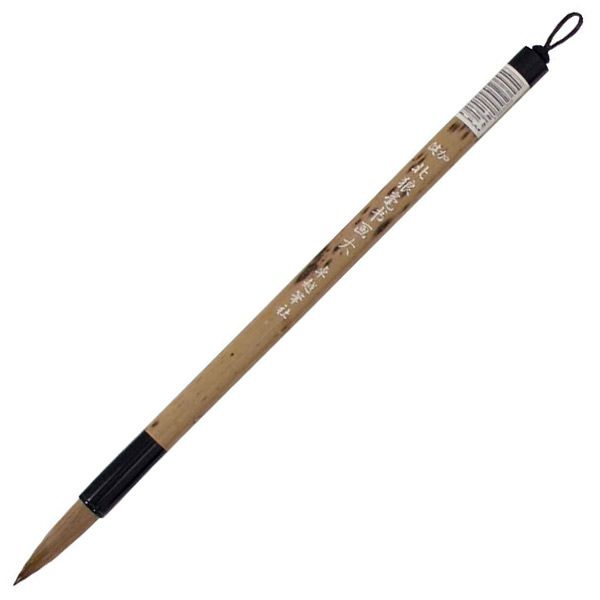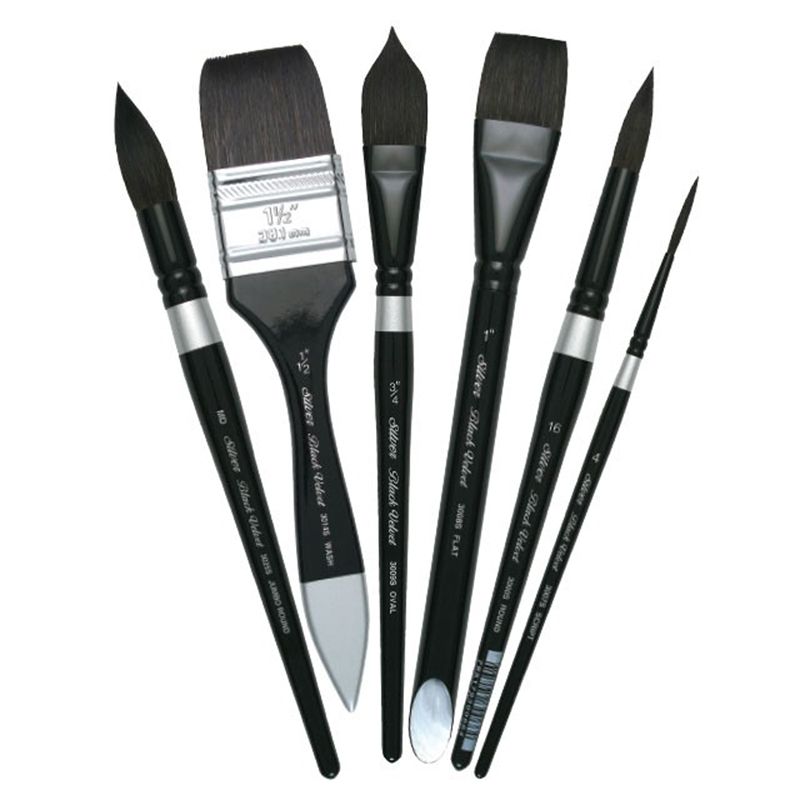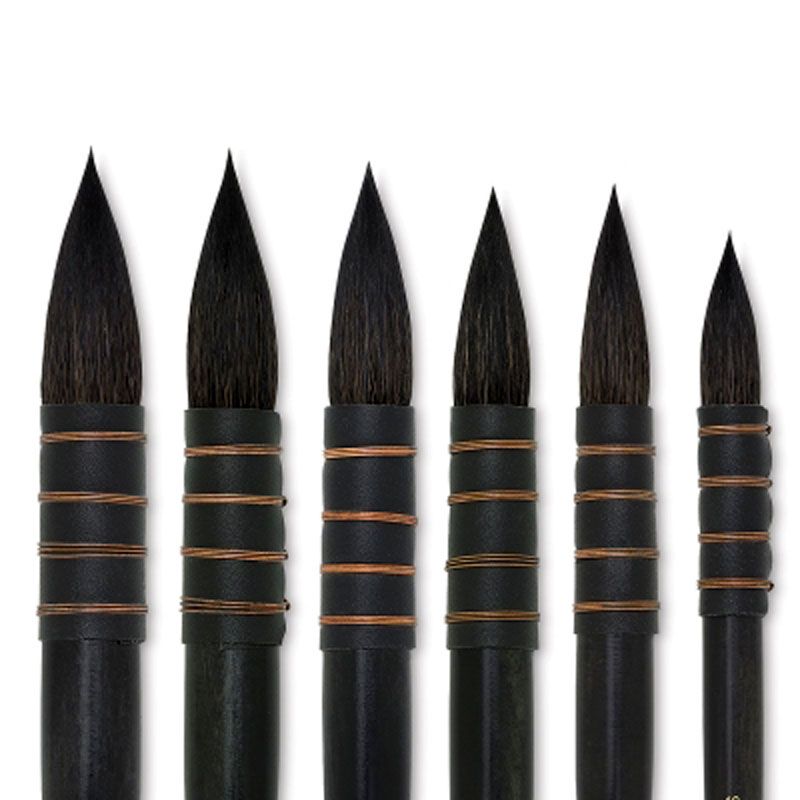Paint brushes are an extension to an artist’s arm, a medium to pour their thoughts onto the canvas, it’s a magic wand that artists adore. In olden times, the renowned painter - Leonardo da Vinci apparently utilized round paint brushes made of animal hair tied to a wooden handle. The equivalent can be said for Johannes Vermeer and Rembrandt, and numerous other different artists of the Western world until the beginning of the 20th century.
The change came with the invention of the metal ferrule which is a little plate formed around the brush handle holding the bristles of a brush. The breakthrough allowed manufacturers to develop innovative new brush shapes that could produce a different variety of strokes and marks. For instance, by crushing the bristle end of the ferrule, manufacturers were able to produce flat brushes that the Impressionists embraced and have become a staple of today's artists' studios.
In advanced times like today, paint brushes come in numerous shapes, sizes, types of brush fibers and blends. All these characteristics can be either a guide or a hindrance to a craftsman depending on the desired results and knowledge. To clear this dilemma of how to buy paint brushes for the right application and media, we have created an artist's paint brushes buying guide to understand the types of brushes.
The paint brushes are characterized as per,
● Types of hair or synthetic bristles
● Shape of the bristles
● Width or thickness of the bristles
● Length of the handle
To explain each type in-depth, we have divided this blog into 3 parts. So, stay tuned to learn more features on the brushes to consider. Subscribe to our newsletters so that you do not miss out on the next blog.
Paint Brush Hairs/Bristles
The type and quality of hair found in the fibers of the brush may be the most significant factor for picking up the correct brush. If you do not choose an appropriate brush, you may experience some troublesome outcomes and disappointment.
Brushes can be made out of hog bristles, sable, minks, weasel, mongoose, badger, horse or pony, squirrel, wolf, sheep or goat, ox, camel, raccoon or rabbit, etc. Each animal hair offers its own exclusive qualities and purpose, facilitating the artist specific needs.
Not that long ago, the synthetic brushes were invented to mimic the natural brush hair characteristic qualities. The multi-diameter dynamic brush filament extrusion processes out of nylon or polyester, taklon or a blend of nylon and polyester fibers that last longer, more durable and more affordable. The fibres can be hollow or solid, tapered or untapered. Although, the tapered filaments feature a smoother quality finish.
Sable
Kolinsky Sable brushes are renowned for their softness, flexibility, and fine point; made from the hairs on the tail of a sable marten. Named after the Sable Marten, an animal from the mink family, found in northern Mongolia and Kazakhstan regions of Siberia (Russia); which is known for its luxurious black or silver soft hairs and snap. The Kolinsky sable from Siberia has traditionally been considered the best hair for watercolour brushes. These brushes are best for fine details and very thin paint or blending with oils.
Despite the fact that its name recommends that the hair strands are taken from a creature called a "sable", the hairs usually belong to a weasel or mink family; when they're arranged to form a brush, they naturally taper into a point.
The Red sable is also a member of the marten family, whether is the Kolinsky Siberian red hair weasel (Mustela sibirica); located in harsh cold Siberian and Manchurian climate. Or the Ukraine and Romania weasel that has a reddish coat and sought by watercolourists for their absorbency and resiliency, as well as a finely tailored tip with snap. Whereas, the domestic, farm-raised sable does not produce the same quality coats as their wild counterparts, therefore are less expensive and easier to find, making them more affordable.
When purchasing a brush, you should always consider the international standards on brush type, sizes, and compare the diameter. The elasticity and the springiness of the brush that should also be taken into account.
Thanks to Leonardo DaVinci's description of the capillary action (how liquid rises up and across within a narrow hollow), law of gravity enforced continuous supply of colour is furthered by the natural belly reservoir and a precise tip.
Most brush hair tapers evenly from the root to the tip. Sable hair, however, shows a root-like thickening only after a good third up the length, allowing the belly of the brush to hold the water and colour and the long-tapered point gives flexibility, detail control and longevity. If the hair is set too short into the ferrule, the brush wears out quicker.
Made of quality Kolinsky sable hair, Birchwood handles and seamless nickel ferrules, the Winsor & Newton Artists' Watercolour Sable Brushes enable you to work on fine detailing and carry a good amount of paint and hold its form.
Hog
Hog bristles taken from pigs (hogs) back and neck; known as the oil painter’s workhorse. It’s unique resilient springy coarse hair with natural "flag" or split ends, increases the amount of paint they hold and is used for thicker paint consistencies for both oils and acrylics. The inexpensive brushes, you may experience the unruly hair and some coming out of the crushed ferrule.
High-quality brushes are a better-value; the hog bristles are less likely to shed, splay, or deteriorate, and give even colour distribution. The Interlocked 'curved' heads allow retention of shape or Chungking Hog Hair bristles, with the long, deep flags, crimped ferrule, helps to maintain precision in the brush's edge or point, and equipped to carry a huge amount of paint, brush strokes are clearly defined when this kind of brush is utilized. The bristle age well, like fine wine, the bristles become softer and more responsive with usage.
Squirrel
Although the Squirrel brushes are soft; however cheaper than sable, they lack spring which makes them difficult to control. It can be an alternative to the sable brushes. Despite the absence of spring, squirrel brushes are equipped for delivering a fine tip. These hairs are taken from the tails of gray and brown squirrels. This type of brush hair is best suited for thin paints like watercolour and ink. The bigger squirrel brushes work better than smaller ones because the mass of hairs together gives them a bit more support.
We love the Silver Brush Atelier™ line of brushes that comes with the Quill Series Squirrel hair brush. Perfect for use with watercolour paints, their silky-smooth black squirrel hair holds maximum amounts of colour or water.
Silver Black Velvet Brushes special blend of natural squirrel hair and black synthetic filament is designed to provide excellent carrying capacity with control, spring, and precise point. Ideal working tool for the watercolourist, silk painter, and artists working with inks, dyes, acrylics or gouache.
Ox
Ox hair brushes, taken from cattle or oxen, are springy but do not produce a fine tip. These brushes can be utilized with an assortment of painting media. The long, strong and springy hair is most often used in flat shaped brushes These brushes hold large amounts of colour and are excellent for moving large quantities of paint across the canvas, especially when working with thicker paint or mediums.
Goat or Sheep
Lacks spring, but forms a good point. The goat hairs are white or black (depending on the goat), often used for watercolour painting, are capable of creating good colour washes and wetting the paper. Sheep hair brushes are used in calligraphy and Chinese Brush painting.
The soft and absorbent goat hairs are commonly used as flat wash brushes for watercolour and ink. All Japanese hake brushes are white goat hair, mop brushes come in white or black. The best goat hairs are taken from the breast of the goat for brush-making.
The Silver Atelier Series has the best Quill Series White Goat hair brush for use with acrylic, oil, and watercolour paints. These are the best for blending paints on a variety of surfaces.
Pony
The natural brush hairs are taken from mature horses (not ponies). Do not confuse with the inexpensive filament brushes, often used in cheaper watercolour, which are coarse and tough and don't form a good point. These are used for water-based paints, watercolour, tempera, gum-based paint, and acrylics.
The better-quality brushes like the Sumi Red Pony bamboo brushes have a long-tapered point that comes to a needle-sharp tip are great for Oriental art, calligraphy and watercolour painting.
Camel
Brushes labeled 'camel' hair are really made from a mixture of soft short hair, low-grade, random animals like rabbit or cat hair, etc. The inexpensive brushes are usually sold for kids, used with tempera and watercolour. Camel hair is unsuitable for paint brushes, the camel hair is very similar to muskox wool; frizzy and extremely soft and downy (suitable for making cashmere).
Wolf
Renown in traditional Chinese and Japanese calligraphy brushes use soft and absorbent goat hairs in the center of the brush surrounded by long, strong wolf guard hairs that enable the brush to hold an excellent point.
Connoisseur Northern Wolf Brush, 'Yuming Zhu' Asian art Sumi brushes. The Wolf hair brush gives you better control with larger strokes, sturdier tip gives better support. Connoisseur Northern Wolf Brushes excellent for bamboo and landscape painting.
Checkout the Winsor & Newton Bamboo Brush –Series 150 which is a brush for Asian ink and watercolour painting, but the extra-long hairs make for exciting strokes in traditional watercolours as well.
Badger
Bob Ross brushes used to be made with Badger hair. Badgers are very common animals in the wild, so their hair is more abundant than most other natural hairs used to make brushes. Badger hair brushes are the oldest, most traditional type of brushes used for oil painting on canvas because the hairs are strong and snappy. Strands of badger hair are thinner at the base and get wider at the tip giving the brush a “bushy” appearance. This shape allows badger hair brushes to work very well for painting specifically with oils.
Synthetic
Produced using nylon or polyester filaments, synthetic brushes offer the most flexibility. It can be used with almost any painting medium. So, if you are a beginner and can’t decide which brush to buy, go for synthetic brushes. Not only do they look the same, their performance is nearly identical.
Artist quality synthetics are engineered to mimic the structure of the animal’s natural hair, even on a microscopic level! Synthetic squirrel hairs have a wavy, undulating form with a naturally tapered tip just like real squirrel hairs. Synthetic hog bristles also mimic the taper of a natural hog bristle and are just as snappy and responsive, and hold it form and far less prone to breakage and designed to be used with harsh solvents without disintegrating or losing any of their great qualities. Artist quality synthetics are often less expensive than artist quality natural hair brushes, plus they'll have a longer life because the fibers don't become dry and brittle like natural hairs.
Dynasty Faux Squirrel made with a blend of synthetic hairs, these brushes are much more durable than natural Squirrel hair and can hold a good amount of paint for perfectly even application. Whether your artistic specialty is gouache or watercolour, a must-have for your brush collection.
Now that you learned about the types of brush hairs, look out for our next blog Understanding the Varied Shape of Bristles and its applications.




























